





PartnerStack has long been a go-to platform for managing affiliate and partner programs, especially within the SaaS ecosystem. However, as businesses scale and marketing needs evolve, many are seeking alternatives. Common criticisms of PartnerStack include a steep learning curve, limited customization options, and occasional performance issues. These limitations have prompted marketers to explore other solutions.
In this article, we'll delve into the top 10 PartnerStack alternatives available in 2025, providing a detailed comparison of their features, pricing, and user reviews to help you make an informed decision.
The platforms we'll explore include:
Here are four common reasons users search for PartnerStack alternatives based on our research:
Many users report that PartnerStack provides minimal live support, leaving affiliates and program managers frustrated. Accounts can be flagged or suspended automatically with little to no human intervention, and attempts to contact support often go unanswered.
Accounts have reportedly been suspended without clear reasons, often flagged as “associated with potentially fraudulent accounts” even after months or years of consistent performance. Affiliates describe losing earned commissions unexpectedly and receiving generic responses.
PartnerStack’s platform is heavily niche-focused, and users note that available programs sometimes offer lower initial commissions. While recurrence can compensate over time, the lack of flexibility in product offerings or commission structures makes it harder for affiliates to scale earnings.
Some affiliates have encountered problems with PartnerStack’s fraud detection system generating false positives, which can disrupt payout processes. Additionally, the payment system is considered underdeveloped compared to competitors.
Our comparison focuses on several key aspects:
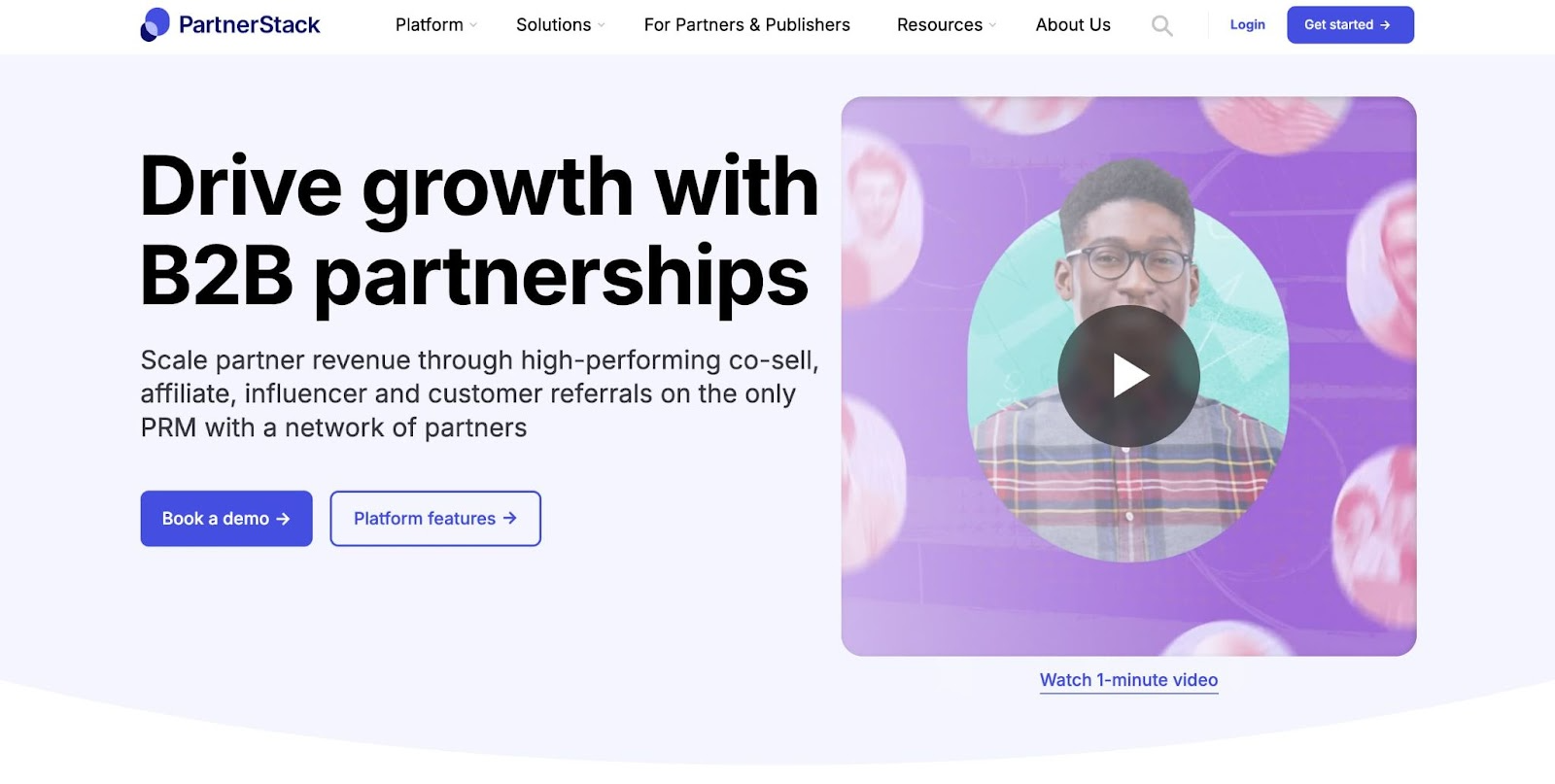
Platform Coverage: Supports partner programs that span B2B SaaS-focused channels across online platforms, including affiliate links, influencer networks, co-sell partners, resellers, etc.
Best For: B2B SaaS companies, especially those working through affiliates, referral partners, co-sell agencies, or influencers, seeking to scale partner-driven revenue with program automation, marketplace access, and analytics.
Pricing: PartnerStack doesn’t list its pricing publicly; costs depend on factors like company size, growth goals, and unique requirements, typically starting in the five-figure range annually for established SaaS businesses.
Reviews: 4.8 / 5.0 (Capterra)
Ease of Use (UX/UI): Users frequently describe PartnerStack’s interface as clean, intuitive and easy to navigate. Agencies and affiliates find it streamlined for campaign and commission tracking, with minimal learning curve.
Customer Support: Customer support is commonly praised as responsive and knowledgeable, with many users noting that the support team is always available to answer questions and help during setup or ongoing use. Occasional critical reviews mention less documentation for some advanced features, requiring direct support conversation.

Platform Coverage: Instagram, TikTok, YouTube, Facebook, Pinterest, Snapchat, X, Twitch
Best For: Direct-to-consumer and eCommerce brands looking to scale influencer marketing with automation, in-depth analytics, and seamless eCommerce integrations. Especially beneficial for businesses running high-volume seeding or affiliate campaigns where ROI tracking is crucial.
Pricing: (Plans are monthly and scalable.)
Reviews: 5.0 / 5.0 (Capterra)
Ease of Use (UX/UI): Known for its modern, easy-to-navigate interface that requires little training. Features like a drag-and-drop campaign builder, pre-designed templates, and streamlined workflows make campaign setup simple. A Chrome extension further speeds things up by pulling influencer insights directly into campaigns.
Customer Support: Frequently highlighted as a key strength. Users get 24/7 live chat with real experts, responsive email support, and a rich Help Center filled with guides and tutorials. Every plan includes a dedicated account manager, and Pro users also gain access to a private Slack group for hands-on support.
PartnerStack and Influencer Hero serve very different needs. PartnerStack is built for B2B SaaS companies, focusing on affiliates, referrals, resellers, and co-selling. It offers CRM integrations, automated payouts, and access to a large marketplace of B2B partners, but it’s not designed for consumer-facing influencer campaigns on platforms like Instagram or TikTok.
Influencer Hero, in contrast, is tailored for D2C and eCommerce brands. It supports eight major social platforms, combining influencer discovery, CRM, outreach automation, affiliate management, and product seeding. Pricing is transparent, starting at $649/month and scaling up to $2,490/month for larger programs.
In short, PartnerStack is best for SaaS brands scaling through partner ecosystems, while Influencer Hero is ideal for eCommerce and consumer brands driving growth through social media influencers.
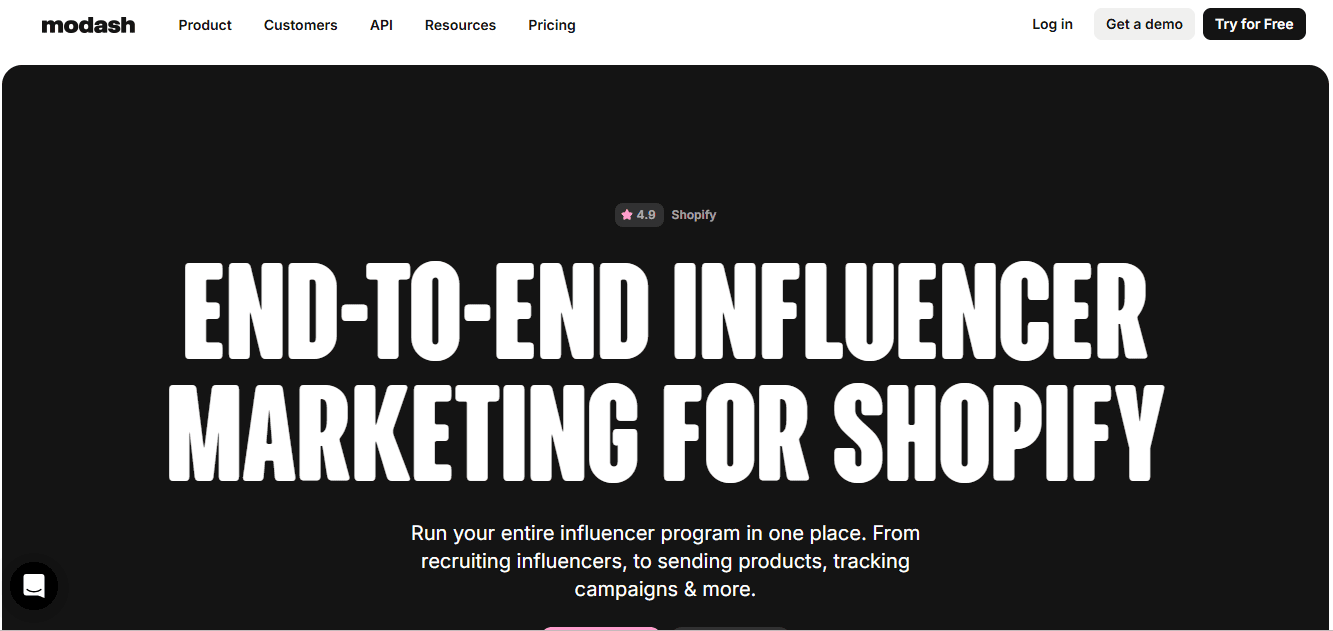
Platform Coverage: Instagram, TikTok, YouTube, and profile recognition for X, Snapchat, and other platforms.
Best For: Suited for brands and in-house teams that need an end-to-end influencer marketing solution with strong discovery tools, analytics, and campaign management. Works particularly well for eCommerce companies using Shopify or similar platforms and looking to scale programs with data-driven insights.
Pricing: Modash offers free trials to both their Essentials and Performance plan.
Reviews: 4.9 / 5.0(Capterra.com)
Ease of Use (UX/UI): Recognized for its straightforward, clean design. Marketers appreciate the simplicity of its discovery and filtering tools, which are powerful without being overwhelming.
Customer Support: Users report that support is both responsive and proactive. Feedback is taken seriously, with new updates introduced quickly. Onboarding assistance is also considered strong.
PartnerStack is tailored to B2B SaaS companies, focusing on affiliates, referrals, resellers, and co-selling. It provides CRM integrations, automated payouts, and a large partner marketplace but is not optimized for consumer influencer campaigns on social platforms like Instagram or TikTok.
Modash, on the other hand, is built for D2C and eCommerce brands running social influencer campaigns. It supports Instagram, TikTok, and YouTube, with access to over 350M+ public creator profiles. Its strengths lie in powerful influencer discovery, Shopify integration for gifting and affiliate tracking, bulk outreach, and real-time campaign analytics. Pricing is transparent and starts much lower than PartnerStack, at $199/month for Essentials and $499/month for Performance.
In short, PartnerStack is ideal for SaaS brands scaling revenue via structured partner ecosystems, while Modash is best for consumer brands that want affordable, data-driven influencer discovery and campaign management at scale.

Platform Coverage: Instagram, TikTok, YouTube, X , Twitch, Pinterest, WordPress blogs.
Best For: eCommerce and direct-to-consumer businesses, including Shopify and Amazon sellers, that require a full influencer and affiliate management platform. It combines creator discovery, AI-powered outreach, campaign oversight, and affiliate payment handling.
Pricing: Upfluence offers annual contracts with the following pricing.
Reviews: 4.6 / 5.0 (G2)
Ease of Use (UX/UI): A robust platform with extensive tools for discovery and management. However, new users often note a noticeable learning curve, with onboarding being key to leveraging its full capabilities.
Customer Support: Users frequently praise the onboarding process and support from account managers, particularly for integrations with Shopify, Outlook, and Gmail. That said, some report frustrations with billing and contract policies, meaning experiences can vary depending on account management.
Discover our top Upfluence alternatives to supercharge your influencer marketing strategy and find the perfect tools to grow your brand
PartnerStack and Upfluence differ strongly in their focus.
PartnerStack is a B2B SaaS partner management platform, specializing in affiliates, referrals, resellers, and co-selling. It streamlines onboarding, payouts, and CRM integrations, but it is not built for consumer-facing influencer marketing on Instagram, TikTok, or YouTube.
Upfluence, in contrast, is an end-to-end influencer marketing platform for eCommerce and consumer brands. It supports Instagram, TikTok, YouTube, X, Twitch, Pinterest, and WordPress blogs, while also offering strong Shopify and Amazon integrations for tracking ROI, product seeding, affiliate campaigns, and customer-to-influencer identification. Pricing starts at $1,276 per month on annual contracts, which makes it more expensive and less flexible than many competitors.
PartnerStack is ideal for SaaS companies scaling revenue through structured partner ecosystems, while Upfluence is the better choice for brands that want multi-platform influencer marketing with eCommerce sales attribution and advanced ROI tracking.
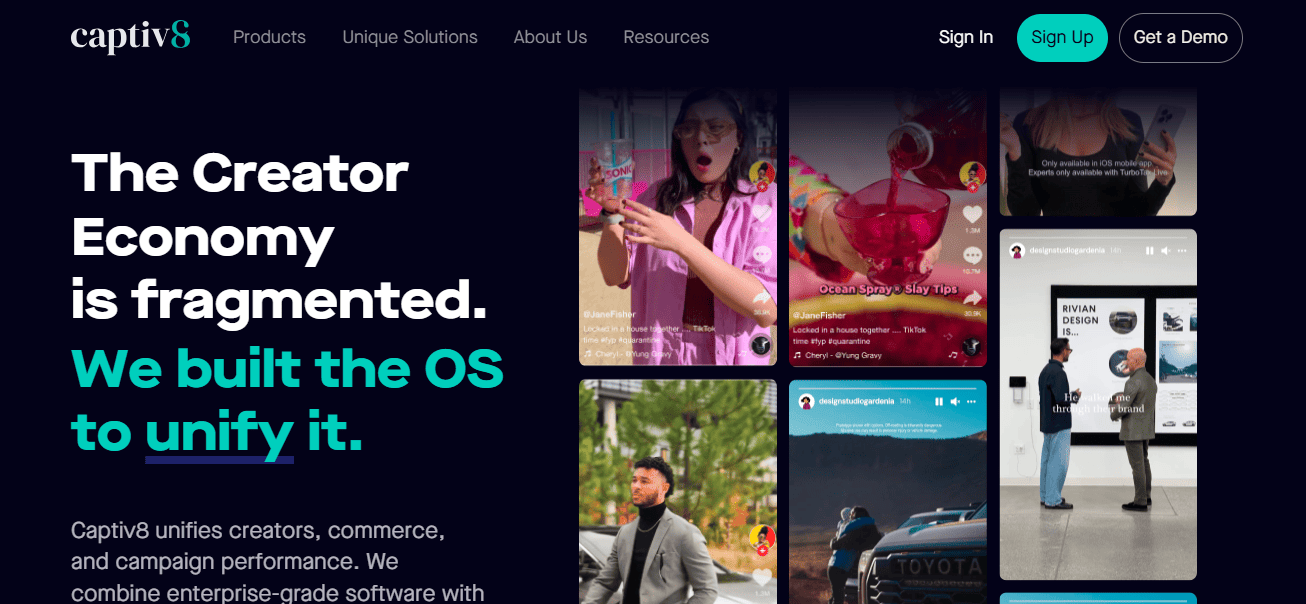
Platform Coverage: Captiv8 supports influencer campaigns across Instagram, YouTube, TikTok, Facebook, Twitter, and Pinterest.
Best For: Built for large brands and enterprise-level organizations that need an advanced influencer marketing platform. With strong discovery, in-depth analytics, and competitive tracking, it’s best suited for companies running multiple campaigns at scale.
Pricing:
No monthly or customizable plans are available; pricing is rigid and enterprise-focused
Reviews: 4.6 / 5.0 (G2)
Ease of Use (UX/UI): While packed with features, the platform can feel complex at first. Once users adapt, they value the customizable reporting and smooth team collaboration features.
Customer Support: Enterprise clients benefit from access to managed services. However, feedback often points to slow response times, difficulties with payment processes, and challenges in resolving support tickets.
PartnerStack is a partner relationship management platform for B2B SaaS companies. It focuses on affiliates, referrals, resellers, and co-selling, with tools for onboarding, payouts, CRM integrations, and access to a large B2B partner marketplace. However, it is not designed for consumer-facing influencer marketing on platforms like Instagram or TikTok.
Captiv8, in contrast, is built for large consumer brands running influencer campaigns at scale. It offers access to 15M+ creators, advanced filtering, competitor tracking, sentiment analysis, and detailed performance reporting that integrates with Google Analytics and Looker Studio.
Pricing starts at 25,000 per year with an additional 3,000 dollar onboarding fee, and features like storefronts and affiliate programs can add 20 to 30k dollars per month, making it best suited for enterprise-level brands.
In summary, PartnerStack is the better choice for SaaS companies scaling through structured partner programs, while Captiv8 is geared toward big consumer brands that need deep campaign tracking and competitive intelligence but are prepared for high costs and limited flexibility.
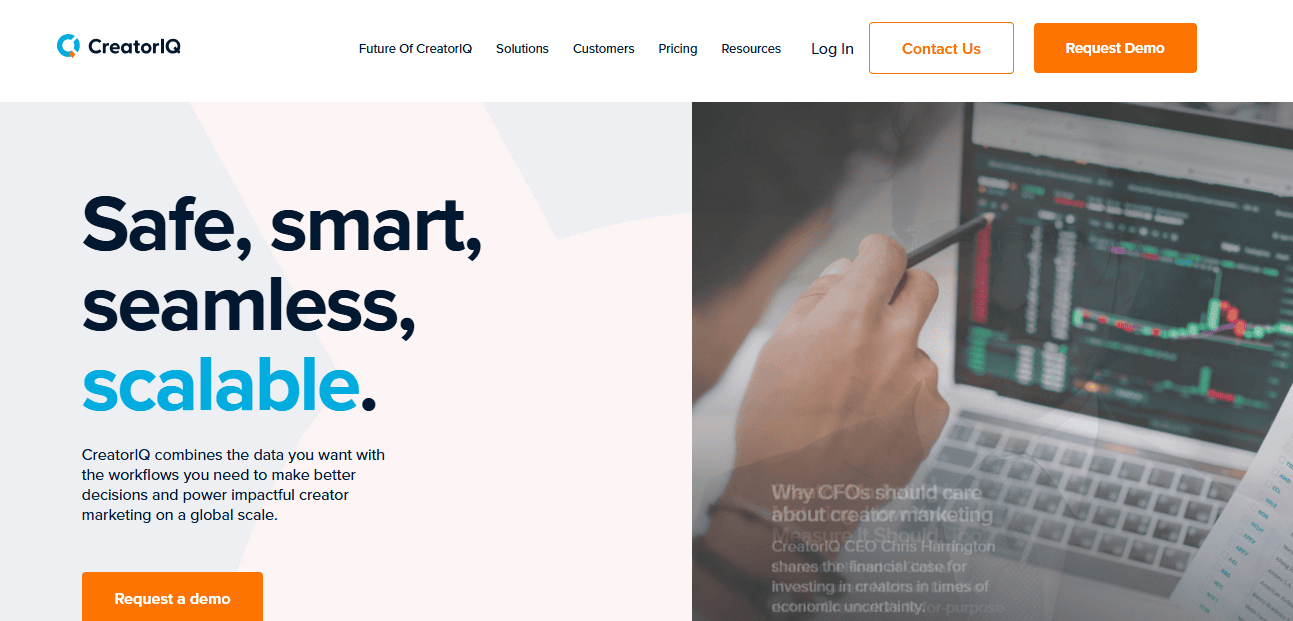
Platform Coverage: Instagram, TikTok, YouTube, Facebook, Pinterest, Twitch, X.
Best For: Designed for global enterprises, agencies, and large brands seeking a scalable influencer marketing solution with advanced analytics, customizable workflows, and broad tech integrations. It excels at managing complex, multi-market campaigns.
Pricing:
Reviews: 4.6 / 5.0 (G2)
Ease of Use (UX/UI): A feature-heavy platform that requires onboarding to master. Once set up, its dashboard and analytics are considered intuitive, flexible, and adaptable to varied campaign needs.
Customer Support: Clients often praise detailed onboarding and responsive account managers, especially for enterprise accounts. However, the platform’s complexity can sometimes lead to slower resolutions for technical problems.
PartnerStack is a partner management platform for B2B SaaS companies, designed to handle affiliates, referrals, resellers, and co-selling. It automates onboarding, payouts, and CRM integrations while giving access to a large B2B partner marketplace, but it is not built for consumer-facing influencer campaigns on platforms like Instagram or TikTok.
CreatorIQ, on the other hand, is a premium influencer marketing platform used by global consumer brands. It supports Instagram, TikTok, YouTube, Facebook, Pinterest, Twitch, and X with direct API integrations for real-time data. The platform covers the full campaign lifecycle including discovery, outreach, reporting, gifting, and payments.
Pricing starts at 35,000 per year and scales up to 200,000, making it best suited for enterprise brands seeking deep analytics and multi-platform campaign management.
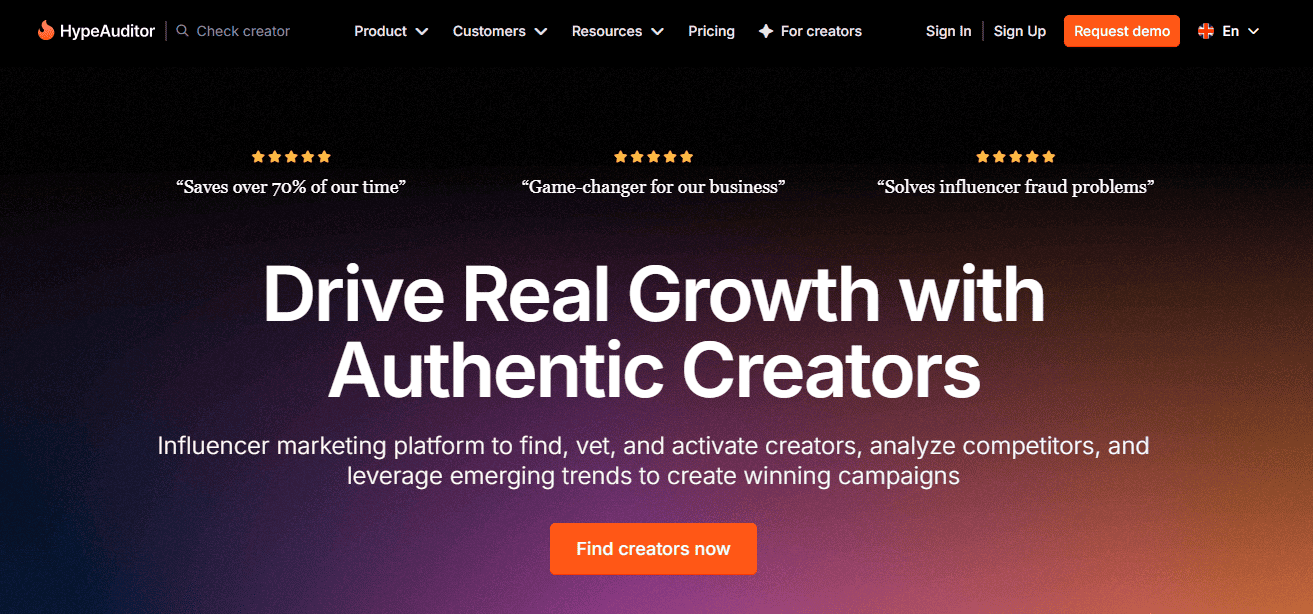
Platform Coverage: Instagram, TikTok, YouTube, Twitch, X (Twitter), Snapchat
Best For: Suitable for agencies, brands, and eCommerce businesses that value precise audience analytics, fraud prevention, and ROI measurement. Particularly useful for teams needing authenticity scores, advanced audience insights, and adaptable campaign management.
Pricing: Custom plans based on usage. Flexible contract terms depending on platform access, campaign volume, and number of reports.
Check out our top 10 HypeAuditor alternatives offering effective influencer marketing tools, side by side.
Reviews: 4.5 / 5.0 (G2)
Ease of Use (UX/UI): The platform offers extensive data and advanced functionality, which may feel overwhelming at first. With onboarding, users find the interface clear, with intuitive filters and customizable reporting that make tracking easier.
Customer Support: Account managers and onboarding support are often praised, especially for new users. However, response times can lag for billing matters or complex technical requests.
PartnerStack and HypeAuditor target different audiences.
PartnerStack is built for B2B SaaS companies, focusing on affiliates, referrals, resellers, and co-selling. It automates partner onboarding, payouts, and CRM integrations, while providing access to a large marketplace of B2B partners. However, it is not designed for consumer-facing influencer campaigns on platforms like Instagram or TikTok.
HypeAuditor, on the other hand, is an influencer marketing platform supporting Instagram, TikTok, YouTube, Twitch, X, and Snapchat. It offers advanced influencer discovery with AI-powered search, social listening, competitor tracking, and outreach tools, along with campaign management features like gifting, contracts, PayPal payments, and ROI reporting.
Pricing is customizable, starting around 10,000 dollars per year for a standard plan and reaching 60,000 dollars for enterprise use.
In short, PartnerStack is best for SaaS companies scaling partner ecosystems, while HypeAuditor is better for brands focused on influencer discovery and performance-driven campaigns across social platforms.
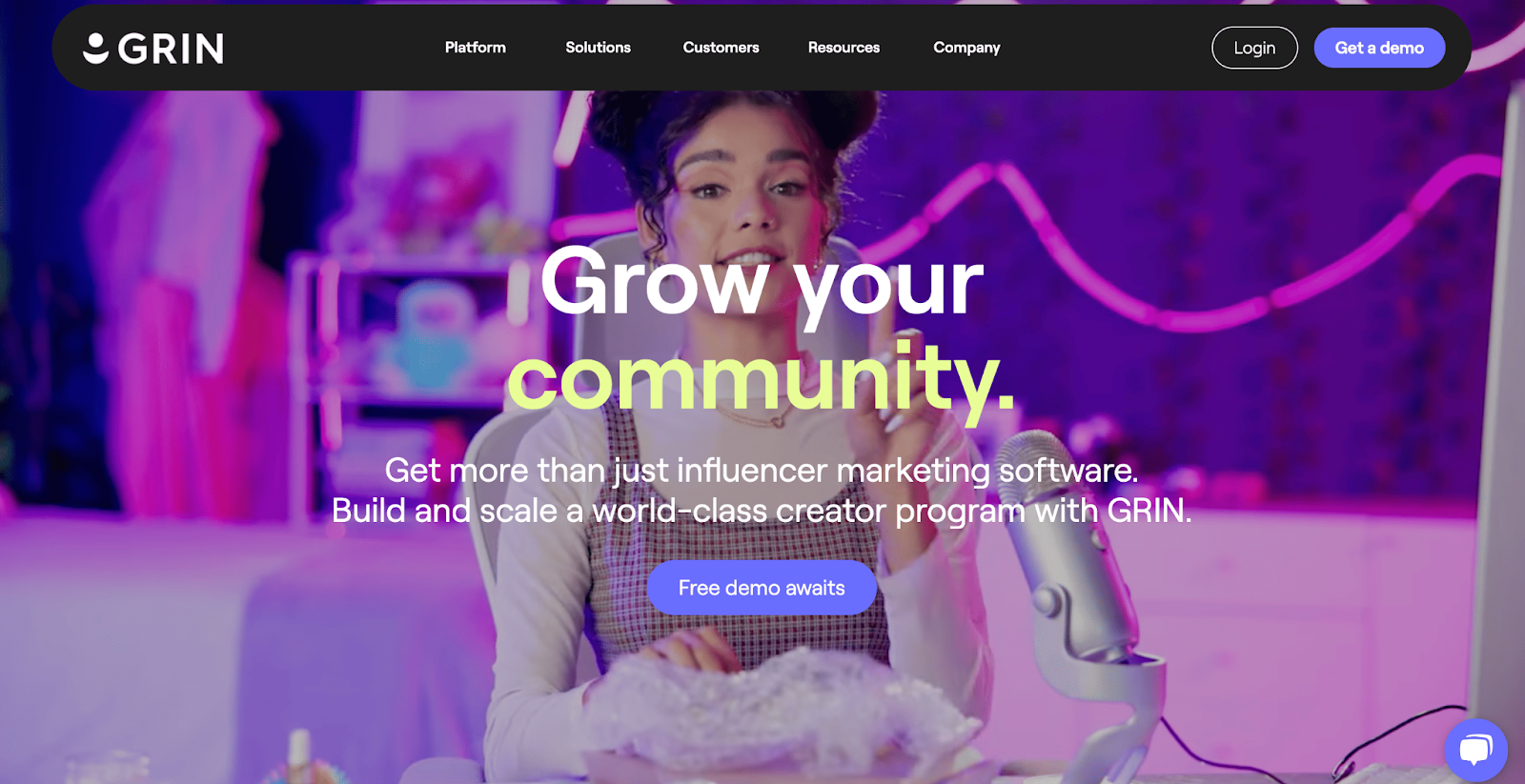
Platform Coverage: Instagram, TikTok, YouTube, X, Twitch, Snapchat
Best For: Built for eCommerce and DTC brands needing a complete influencer marketing solution, GRIN supports everything from gifting and seeding to affiliate tracking, payments, and UGC management. It’s especially useful for Shopify, WooCommerce, and Magento users aiming to directly connect influencer activity with sales and ROI.
Pricing: Plans start at $25,000 per year, with monthly payments available and a required 12-month commitment; typical monthly costs range from $2,500 to over $10,000 depending on usage, though pricing transparency may vary based on selected features.
Reviews: 4.5 / 5.0 (G2)
Ease of Use (UX/UI): GRIN centralizes workflows into one dashboard. While comprehensive, the platform’s depth can feel overwhelming for newcomers.
Customer Support: Feedback is mixed. Many users value onboarding and dedicated strategists, while others mention slow ticket handling, billing challenges, and inconsistent technical help.
PartnerStack is designed for B2B SaaS companies, helping them scale through affiliates, referrals, resellers, and co-selling. It automates partner onboarding, payouts, and CRM integrations, and connects brands to a large B2B partner marketplace. However, it is not suited for consumer-facing influencer marketing on platforms like Instagram or TikTok.
GRIN, on the other hand, is built for eCommerce and DTC brands running influencer programs end-to-end. It integrates directly with Shopify, WooCommerce, and PayPal, allowing brands to manage discovery, gifting, payments, affiliate tracking, and UGC in one place.
GRIN includes unlimited creator partnerships, AI-powered discovery, inbound application pages, and a centralized UGC library. Pricing starts at around 25,000 dollars per year with annual commitments, making it a better fit for established eCommerce brands than smaller teams.
In short, PartnerStack is ideal for SaaS companies scaling structured partner ecosystems, while GRIN is designed for eCommerce brands needing full-cycle influencer marketing with deep integrations and ROI tracking.
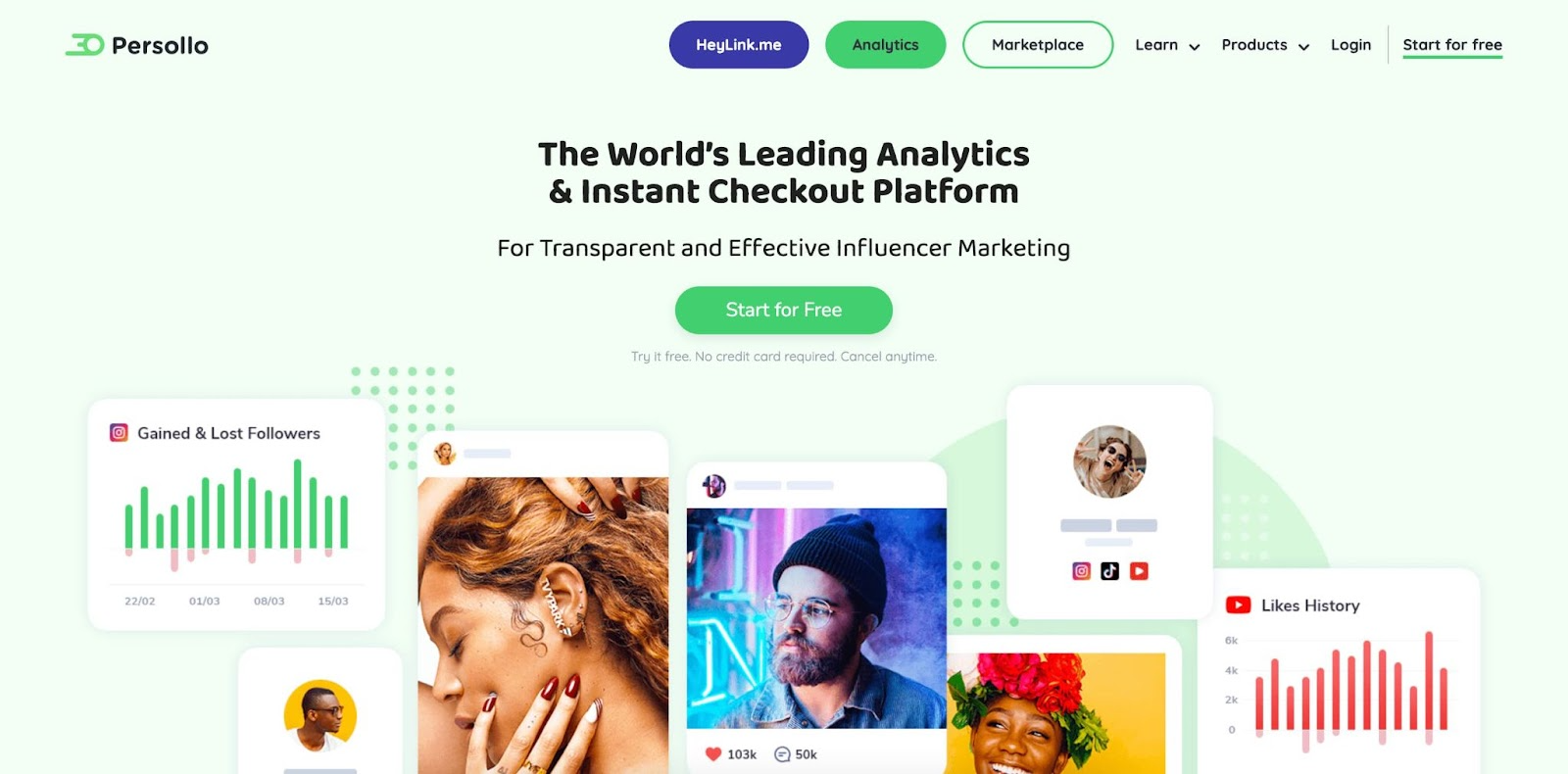
Platform Coverage: Instagram, TikTok, YouTube, Facebook, X.
Best For: Geared toward eCommerce brands, creators, and small businesses looking to turn social engagement into instant sales with one-click checkout. It’s particularly effective for categories like beauty, lifestyle, and fashion, where impulse purchases drive revenue.
Pricing:
Reviews: 4.7 / 5.0 (G2)
Ease of Use (UX/UI): Recognized for its simplicity, Persollo makes it easy to create checkout links without requiring a full eCommerce setup. The streamlined design enables fast monetization, making it accessible even to small teams.
Customer Support: Public details are limited. Larger clients reportedly receive personalized support, while smaller users suggest onboarding and live assistance could be improved.
PartnerStack offers a unified dashboard, advanced reporting, automated payouts, and a large partner marketplace. Its strength lies in program automation and seamless CRM integrations, making it ideal for enterprise SaaS businesses. Pricing is not publicly listed but typically starts in the five-figure range annually, reflecting its focus on larger organizations.
Persollo, on the other hand, focuses on eCommerce brands, creators, and small businesses aiming to convert social engagement into instant sales. It supports Instagram, TikTok, YouTube, Facebook, and X, offering tools like AI targeting, one-click checkout, shoppable content, and influencer discovery.
With plans starting from a free tier up to custom enterprise pricing, Persollo is well-suited for smaller teams seeking quick monetization of influencer campaigns, particularly in fashion, beauty, and lifestyle niches.
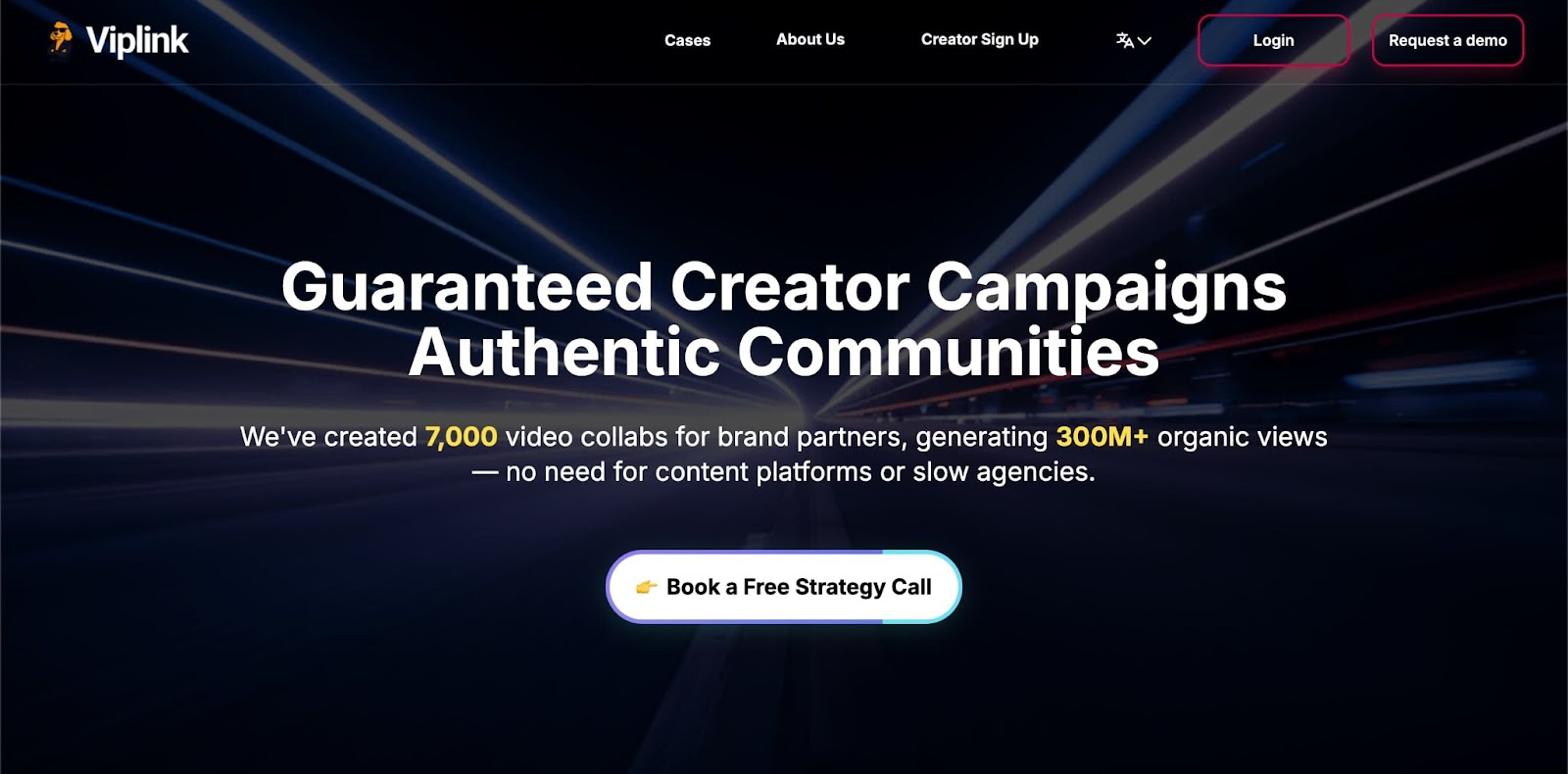
Platform Coverage: YouTube, Instagram, TikTok, Facebook.
Best For: Built for eCommerce and D2C brands looking to integrate AI into influencer discovery, campaign management, and content creation. It’s particularly useful for teams prioritizing automation and data-driven influencer selection at scale.
Pricing: No upfront fees; payment is only due once you approve creators and content. Brands must pay an additional fee, an amount not publicly disclosed, based on payments made to each creator.
Reviews: 4.4 / 5.0 (G2)
Ease of Use (UX/UI): The interface is sleek, intuitive, and designed for ease of navigation, making campaign setup and influencer search simple. AI automations streamline shortlisting, outreach, and tracking. Still, users mention that exploring the platform’s full capabilities requires time.
Customer Support: Known for responsive service through chat, email, and consultations. Clients appreciate comprehensive onboarding and documentation, though response times may slow during busy campaign periods.
PartnerStack is a B2B SaaS partner management platform designed to scale revenue through affiliates, referral partners, co-sell agencies, and resellers. It offers a unified dashboard, AI-powered outreach, CRM integrations, automated payouts, and a large partner marketplace.
Viplink AI, on the other hand, is built for eCommerce and D2C brands seeking AI-driven influencer discovery, campaign management, and content creation. It supports YouTube, Instagram, TikTok, and Facebook, offering smart campaign CRM, automated analytics, AI-generated briefs, and real-time affiliate tracking. With no upfront fees and payment only due upon content approval, Viplink AI suits brands looking for data-driven automation and scalable influencer programs, particularly in online retail, though its pricing is not fully disclosed.

Platform Coverage: Instagram, TikTok, YouTube, Twitch, Facebook, X (Twitter), Pinterest, and blogs; 20M+ creator profiles across 10+ networks.
Best For: Built for mid-to-large brands and agencies managing complex influencer programs. With strengths in verticals like gaming, fashion, consumer electronics, and entertainment, it’s ideal for enterprise teams requiring discovery, campaign management, and ROI reporting with integrations.
Pricing: Undisclosed.
Reviews: 4.2 / 5.0 (G2)
Ease of Use (UX/UI): While powerful, the platform can feel complex at first. Onboarding is often needed to unlock its full potential. Once set up, the dashboard simplifies managing large-scale campaigns with multiple influencers.
Customer Support: Enterprise clients highlight the value of dedicated account managers and integration help. Smaller accounts, however, report longer waits for technical resolutions.
PartnerStack is a B2B SaaS partner management platform focused on scaling revenue through affiliates, referral partners, co-sell agencies, and resellers. It provides a unified dashboard, AI-powered outreach, seamless CRM integrations, automated payouts, and access to a large partner marketplace.
Sideqik, in contrast, is designed for mid-to-large brands and agencies managing complex influencer programs across Instagram, TikTok, YouTube, Twitch, Facebook, X, Pinterest, and blogs. It offers discovery of 20M+ creators, centralized CRM, analytics and ROI tracking, eCommerce integrations, and engagement tools like contests and UGC galleries.
With undisclosed, enterprise-focused pricing starting around $25K/year, Sideqik is best suited for teams needing robust campaign management, detailed audience insights, and multi-platform influencer reporting, particularly in gaming, fashion, consumer electronics, and entertainment.
While PartnerStack remains a strong choice for B2B SaaS companies, many brands are looking for alternatives that provide more flexibility, better customer support, and features tailored to influencer-driven growth. From robust influencer discovery tools to deeper eCommerce integrations, the alternatives highlighted in this guide offer solutions for brands of all sizes seeking to maximize efficiency and ROI.
Among these, Influencer Hero stands out as one of the best alternatives, especially for D2C and eCommerce brands. Its all-in-one platform combines influencer discovery, CRM, outreach automation, analytics, gifting, and affiliate management, making it uniquely positioned to streamline campaigns across major social platforms. With transparent pricing, premium customer support, and advanced automation features, Influencer Hero provides a powerful yet accessible solution for scaling influencer marketing efforts.
Ultimately, the right choice will depend on your business goals, but platforms like Influencer Hero demonstrate how brands can move beyond PartnerStack and unlock more growth opportunities.
Book a demo with Influencer Hero today to see how it can simplify and scale your influencer and affiliate campaigns today!

Many users seek alternatives due to PartnerStack’s limitations such as rigid program structures, account suspension issues, and limited customization. Brands often turn to platforms like Influencer Hero, Modash, or Upfluence for more flexible solutions with stronger influencer and affiliate management features.
Influencer Hero is one of the best alternatives for eCommerce and D2C businesses. It offers influencer discovery, CRM, outreach automation, analytics, and affiliate management in one platform, making it ideal for scaling influencer campaigns while tracking ROI.
Yes, several alternatives offer more flexible and transparent pricing compared to PartnerStack’s enterprise-level costs. For example, Influencer Hero starts at $649/month, while Modash and Upfluence provide entry-level plans that fit smaller or growing brands.
PartnerStack users often report frustration with unresponsive support. Platforms like Influencer Hero stand out with 24/7 live chat, dedicated account managers, and even Slack communities for Pro users, ensuring faster and more personalized assistance.
Yes, many alternatives go beyond affiliate management by integrating influencer marketing tools. Influencer Hero, for example, combines influencer discovery, UGC collection, storefronts, and affiliate tracking, making it a complete solution for brands looking to unify both strategies.



Schedule a Demo with one of our media experts below.